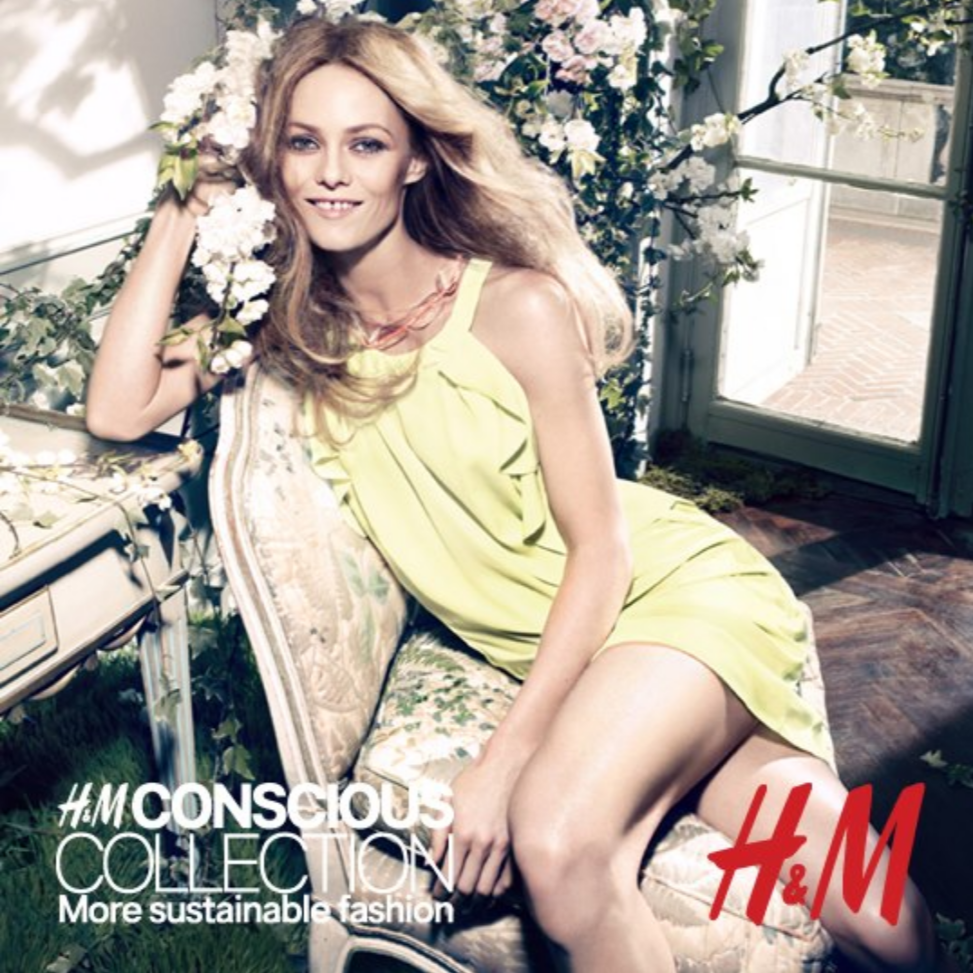Fashion brands over the last decade have gone through phases of turning their morals of originality and quality into replicable and trendy. As this wave of style has created a big shift in the last handful of years, there has been a mix of the idea of sustainability and saving resources in the process of creation to help combat pollution. The only problem is that this ideology does the exact opposite of going hand in hand with fast fashion. H&M has been known for their trendy fast fashion that can be seen all over billboards and malls in very populated cities here in Canada. If you want to fit in, following the clothing trends work; and it is a real bargain if you can get those pieces of clothing at a cheap price, which begs the question; why truly be sustainable when you can fake it through your clothing choices?
Firstly, we should understand what “environmental sustainability” really means, rather than looking at it as buzzwords. According to Roberta Salomone of the University of Messina, environmental sustainability in terms of clothing would be described as it: “focuses on reducing the fashion industry’s ecological footprint. It involves using eco-friendly materials, implementing sustainable production processes, and minimizing waste and pollution.” (Salomone 2023). Understanding this, we can examine how H&M portrays the concept of sustainability in one of its advertisements I have viewed. The ad depicts a lady with long blonde hair in the middle of the advertisement wearing a silky muted yellow dress as she sits slanted on a blossomy chair in a floral room with flowers and grass growing on the ground. The image is set in what could be the morning, or middle of the day; filtered by a higher level of brilliance and a lower level of contrast to give it a more calming, peaceful tone. The lady’s face is well structured and symmetrical as she gives a tranquil smile into the camera with vines of flowers resting beside her head and on the chair. In the right corner of the image, the H&M logo stands out as it is the only red portion of the whole advertisement. The message conveyed is that fast fashion can also be eco-friendly and sustainable. By purchasing H&M’s clothing, you are indirectly caring for the earth, you may think. By the peaceful tones and mute colors, the advertisement is very easy on the eyes to look at, which makes you in a subtle way believe that fast fashion can be positive. With this image targeting many trend followers and a whole base of H&M consumers, this is a very effective way of not only targeting but a brand making eco-friendliness a trend itself. I myself would see this outside and definitely believe that somehow this sustainable fast fashion must be good for the environment in some way, but that’s how they reel you in; not asking more questions to something that may seem suspicious. It is also important to look to scholars to see how they view the impacts of green washing.
Nazmuz Sakib, a graduate of the Bachelor of Science program at the University of Dhaka, claims that: “The deterioration of the environment is positively correlated to the fast fashion industry’s fast growth, especially in many parts of Europe. Through strategic marketing and advertising, major fast fashion companies like H&M and Zara influence society to adopt the culture of ‘throw way.’ Such a culture causes people to buy a garment, wear it a few times and then throw it away.” (Sakib 2022). Since fast fashion is a system that is so replicate, it is no secret that the advertisements play a role in this unfolding, un-eco-friendly reality. Yeliz Kulali Martin is an assistant professor at Galatasaray University who wrote about “greenwashing” describes it as “Greenwashing practices that basically consist on misleading, misguiding and fooling the public opinion, customers and shareholders are used by companies in various and multidimensional manners.” (Martin 2024). Since we are able to take a step back and understand what greenwashing truly is, for the younger generation I am a part of, it is more than ample to understand the wool that fast fashion companies are pulling over our eyes to make us believe that throw away culture is okay.
Sustainability and fast fashion do not go together; at least honestly. With so many problems being handed to our earth from “throw away culture”, it is impossible to mask it with the idea of “going green.” Advertisements like the one we have examined are a big reason as to why people do not bat an eye at the rate these articles of clothing are being made. Living in an attention based economy shapes our whole perspective on ourselves, and being able to look at advertisements and want to be as eco-friendly and as happy as the lady in this still image, may just be contributing to the problem just as much.
Bibliography
Martin, Yeliz K. 2024. “Greenwashing within the Context of Nation Branding and National Reputation Management: Hennes&Mauritz (H&M) – A Swedish Case.” DergiPark Akademik. https://dergipark.org.tr/en/pub/uskudarsbd/issue/85943/1467251.
Sakib, Nazmuz. 2022. “Pollution from fast fashion: H&M.” SSRN. https://papers.ssrn.com/sol3/papers.cfm?abstract_id=4090874.
Salomone, Roberta. 2023. “Fast Fashion & Greenwashing: The worst combination for Sustainability.” https://www.researchgate.net/profile/Ngoc-Nguyen-456/publication/373632703_Fast_Fashion_Greenwashing_The_Worst_Combination_for_Sustainability/links/64f453f8827074313ff598ad/Fast-Fashion-Greenwashing-The-Worst-Combination-for-Sustainability.pdf.


Mainul Islam
Hey Dermot, Your article offers a critical analysis of how the fashion industry has changed over the last ten years, emphasizing the move away from high quality and uniqueness and toward mass-produced trends that are sold as sustainable. By highlighting the contradiction between fast fashion companies’ environmentally conscious advertising and their actual environmental impact, you skillfully criticize H&M. The examination of the H&M advertising, which shows a calm woman in a flowery landscape, shows how, in spite of the company’s participation to a “throwaway culture” that worsens pollution, such imagery can mislead customers into associating the brand with environmental responsibility. The article offers a critical analysis of how the fashion industry has changed over the last ten years, emphasizing the move away from high quality and uniqueness and toward mass-produced trends that are sold as sustainable. By highlighting the contradiction between fast fashion companies’ environmentally conscious advertising and their actual environmental impact, the author skillfully criticizes companies such as H&M. The examination of the H&M advertising, which shows a calm woman in a flowery landscape, shows how, in spite of the company’s participation to a “throwaway culture” that worsens pollution, such imagery can mislead customers into associating the brand with environmental responsibility. The essay is really easy to follow, starting with a nice intro to the topic, then moving into some interesting case studies, and finishing up with a bigger-picture discussion. The writing is clear and thoughtfully critical, making you rethink what you might believe about how sustainable fast fashion brands really are.